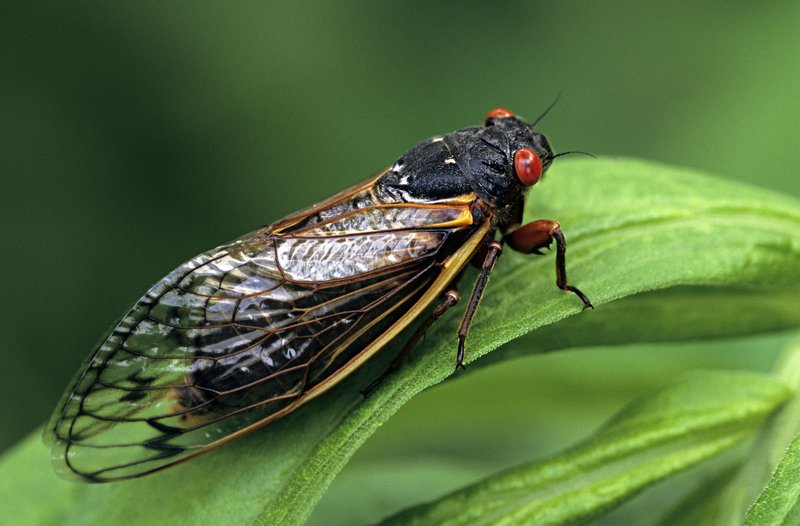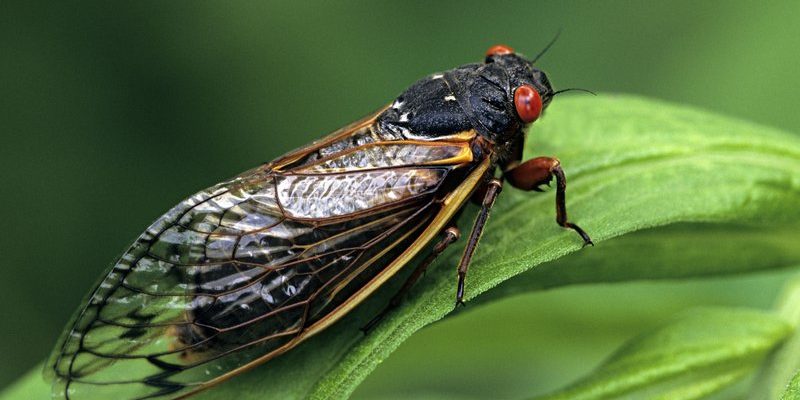
Introduction to Cicadas
Cicadas are one of nature’s most intriguing insects. When you think of summer, the hum of cicadas often fills the air, creating a soundtrack of warmth and life. But there’s so much more to these fascinating creatures than just their songs. With their unique life cycles and remarkable behaviors, cicadas can captivate anyone who takes the time to learn about them.
Imagine being buried underground for years, only to emerge for a brief moment in time to sing, mate, and leave a legacy. That’s exactly what cicadas do! They spend most of their lives hidden away, growing and maturing in the soil before breaking free to embrace a short, vibrant life above ground. Let’s explore the world of cicadas, diving into their biology, behaviors, and the roles they play in our ecosystems.
What is a Cicada?
Cicadas belong to the family Cicadidae and are known for their distinct sound, which is often mistaken for the noise of summer itself. But what exactly are they? Cicadas are large, flying insects with transparent wings and stout bodies. They are most recognizable for their unique song, produced by males to attract females. The sound is created using specialized organs called tymbals, located on the sides of their abdomen.
There are over 3,000 species of cicadas worldwide, ranging in size from about 1/2 inch to 2.5 inches, depending on the species. Their colors can vary from green to brown or even black, which helps them blend in with their surroundings. This ability to camouflage protects them from predators while they sing and mate. Cicadas are also known for their long life cycles, which can range from 2 to 17 years depending on the species.
Cicadas can be broken down into two main categories: annual and periodical cicadas. Annual cicadas emerge every year in the summer, while periodical cicadas emerge on a more specific schedule, often every 13 or 17 years. Both types play important roles in their ecosystems, serving as food for various birds, mammals, and even other insects.
The Life Cycle of Cicadas
Cicadas have a fascinating life cycle that can span several years. Most cicadas have three stages: egg, nymph, and adult. The cycle begins when female cicadas lay eggs in tree branches. Once the eggs hatch, the tiny nymphs fall to the ground and burrow into the soil. Here, they will spend most of their lives—sometimes up to 17 years!—sipping nutrient-rich sap from plant roots.
While underground, nymphs molt several times, growing larger with each stage. This part of their life cycle is relatively quiet, away from the hustle and bustle of the world above. Once they reach maturity, typically in late spring or early summer, they emerge from the ground. The transformation is remarkable; they crawl out of their underground burrows, shedding their skins in the process.
This emergence is a synchronizing event for periodical cicadas, where massive numbers emerge together, creating a stunning spectacle. The adult cicadas live for only a few weeks to a couple of months. During this time, their primary goal is to mate and lay eggs, continuing the cycle for future generations. You might say this life cycle is all about seizing the moment—an essential part of nature’s rhythm.
Cicadas’ Unique Sounds
One of the most captivating aspects of cicadas is their sound, a hallmark of summer. You might hear them during the day, filling the air with a rhythmic chorus. This sound is primarily produced by male cicadas, who use their tymbals to create vibrations. It’s like they’re singing a love song, hoping to attract females.
The sound can vary significantly between species. Some produce a high-pitched buzz, while others might have a deep, resonant call. Interestingly, cicadas are not the only insects that make noise, but their sounds are among the loudest produced by any insect, sometimes reaching over 100 decibels! This is comparable to a rock concert—loud enough to make your heart skip a beat.
Cicadas often sing in the heat of the day to establish their territory and attract mates. Interestingly, they can also engage in what’s known as “chorusing,” where multiple males sing together, amplifying the sound. This not only helps in attracting mates but can also deter potential predators by overwhelming them with noise. It’s a fascinating example of how sound can influence social behavior in the animal kingdom.
The Role of Cicadas in the Ecosystem
Cicadas may seem like simple summer nuisances, but they play a significant role in their ecosystems. As herbivores, adult cicadas feed on the sap of trees, helping to prune and maintain the health of the plants. This feeding can stimulate growth in trees and contribute to the overall health of forests.
When cicadas emerge in large numbers, they also serve as a feast for various predators. Birds, mammals, and even other insects capitalize on this brief burst of cicada activity. The cyclical emergence of periodical cicadas ensures a wealth of food for these animals, supporting biodiversity within their habitats.
Moreover, when cicadas die after mating, their bodies decompose, enriching the soil with nutrients. This process benefits plants and organisms in the ecosystem, demonstrating how interconnected life can be. In many ways, cicadas act as a bridge in the food web, linking plants, herbivores, and predators.
Interesting Facts About Cicadas
| Fact | Details |
| Species Count | Over 3,000 species worldwide |
| Life Cycle Length | 2 to 17 years depending on species |
| Sound Volume | Can reach 100 decibels or more |
| Main Diet | Tree sap |
| Emergence Pattern | Annual and periodical cicadas |
Challenges Faced by Cicadas
Like many insects, cicadas face various challenges that threaten their populations. Habitat loss due to urbanization, deforestation, and agricultural practices can disrupt their life cycles. As their natural environments shrink, cicadas struggle to find suitable places to lay eggs and thrive.
Pesticides and chemicals used in farming can also harm cicada populations. These substances often eliminate not only pests but also beneficial insects, including cicadas. As specialists in their diets and habitats, cicadas are particularly vulnerable to these changes. If you live in an area where cicadas typically emerge, you may have noticed fewer of them recently, which could indicate a decline in their numbers.
Climate change poses an additional threat to cicadas. As temperatures rise, their emergence patterns can shift, affecting their mating and feeding behaviors. Changes in rainfall and temperature can disrupt the delicate balance of when cicadas emerge, which in turn impacts their ability to reproduce and survive.
How to Appreciate Cicadas
If you want to enjoy the vibrant life of cicadas, there are several ways to do so. First, take a moment to listen. When cicadas begin their chorus, find a comfortable spot outside and experience the symphony of sound. Closing your eyes can help you appreciate the nuances in their calls—from the rhythmic buzzing to the occasional mating chatter.
Another way to appreciate cicadas is through observation. Try locating cicada nymphs and adults in your area. Look for them on tree trunks or in gardens where they might be feeding. Watching them can provide insights into their behaviors, like their unique mating rituals and how they navigate their surroundings.
Educating yourself and others about cicadas is also essential. Share your knowledge and encourage friends and family to respect these remarkable insects. Since cicadas play a role in our ecosystems, understanding their needs can help foster a sense of stewardship for the environment.
FAQ
What do cicadas eat?
Cicadas primarily feed on the xylem sap from plants and trees. Their specialized mouthparts allow them to extract this fluid, which is rich in nutrients. They typically target the roots of mature trees, which provide the sustenance they need during their long nymph stage underground. This feeding is crucial for their development and growth, ensuring they have the energy to mature into adults.
Are cicadas harmful to plants?
While cicadas do feed on tree sap, they are generally not harmful in large numbers. However, during their emergence, females lay eggs by creating small slits in tree branches. This can cause some damage, particularly to young or stressed trees. Most healthy trees can withstand this, and cicadas often help by pruning weaker branches, encouraging new growth.
Why do cicadas emerge in such large numbers?
Cicadas utilize a strategy called “predator satiation” when they emerge in large numbers. By overwhelming their predators with sheer numbers, many cicadas can survive long enough to mate and reproduce. This cyclical emergence ensures that enough cicadas will continue their life cycle, despite the predation they face.
How long do cicadas live above ground?
Adult cicadas typically live for about 2 to 4 weeks after emerging. Their main focus during this time is to mate and lay eggs. After this short reproductive period, their lives come to an end, but their eggs will hatch into nymphs, continuing the cycle for years to come.
Can cicadas be a food source for animals?
Yes, cicadas are an important food source for many animals, including birds, small mammals, and other insects. Their high protein content makes them a popular choice during their emergence. This feeding frenzy plays a vital role in the food web, helping to support various species within their habitats.
Do cicadas cause any noise pollution?
While cicadas can be quite loud, especially during peak mating season, they are generally not considered a source of noise pollution that significantly affects humans. Their sounds are a natural part of the summer landscape, contributing to the seasonal ambiance. For many, the sounds of cicadas bring a sense of nostalgia and connection to nature.
What is the difference between annual and periodical cicadas?
Annual cicadas emerge each year, while periodical cicadas have a much longer life cycle, emerging every 13 or 17 years in massive numbers. The timing of their emergence is synchronized, allowing them to overwhelm predators. Annual cicadas might be heard more frequently, while periodical cicadas create unforgettable events when they emerge in colossal swarms.
Can cicadas be kept as pets?
While cicadas are not commonly kept as pets, some enthusiasts might enjoy observing them during their short life above ground. They require specific environmental conditions to thrive, which can be challenging to replicate. Instead, appreciating cicadas in their natural habitat is the best way to experience these fascinating insects.

